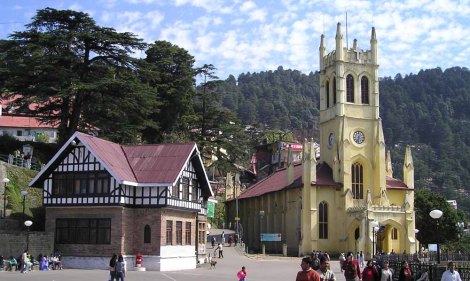Imperial Tobacco Co. of India Ltd. v. Registrar of Trade Marks and Anr.
Imperial Tobacco Co. of India Ltd. v. Registrar of Trade Marks and Anr.
AIR 1968 Calcutta 582
Brief facts:
The Appellant applied for Registration of the mark “Simla” under Part A of the Register. A Show Cause Notice was issued to the Appellant stating that the word “Simla” is a geographical name and registrable only on very strong evidence of distinctiveness. On reply, the Appellants provided evidence regarding extensive sale and advertisement, that was rejected as the mark should have acquired distinctiveness on the date of making the application. The Appellant kept quiet for two years before a new application was filed along with 22 affidavits from various persons under Part B of the register on the same date as the previous one was withdrawn. After rejection of which, this appeal was filed.
Arguments on behalf of the Appellant:
• The said mark has been in use for 3 years prior to the application for registration, therefore, has acquired distinctiveness and so qualified for registration.
• Previously also, geographical names have been registered in Class 34, in India, for instance, St. Moritz, North Pole Everest, Medina, Panama. Oxford, Kali-ghat, Ellora, Mavfair, West End, Gulmarg, London etc.
Arguments on behalf of the Respondents:
• A geographical mark may only be registered on it being distinctive and ‘Simla cigarettes’ could not have gained distinctiveness in a short period of three years.
• Further, the nature of the evidence as regards distinctiveness was also not independent and reliable.
• This is also not a fancy word as it may deceive,not the informed smokers, but an ordinary smoker without any special knowledgeof tobacco not being related to Simla.
Issue:
Whether geographical name “Simla” has acquired distinctiveness within a short period of 3 years on account of extensive sale and advertisement?
Court’s Observations:
The statutory position in India in the Trade andMerchandise Marks Act 1958 was examined thus:
• Section 9(1)(d) makes it clear that there is no absolute bar on registration of a geographical name for it is registrable except upon evidence of its distinctiveness.Various cases such as the Liverpool case, (1928) 46 RPC 99 and the Yorkshire case, (1954) 71 RPC 150 also indicate towards striking evidence of distinctiveness. Additionally, evidence as to the word being a fancy word may also be accepted. Fancy, for this purpose, as has been held is a word that has an innate and inherent character of fancifulness which does not depend on evidence to show that in fact that it is neither deceptive nor descriptive. In the case at hand, the court in this regard, observed that though tobacco is not grown in Simla today, there may be traders in future who will manufacture tobacco there. Hence, it may be deceptive.
• The learned Editor of the 9th Edition of Kerly on the Law of Trade Marks and Trade Names in paragraph 286 and pages 144-45 has emphasized on elements of area and time to acquire distinctiveness. Further, Thorne & Co. Ltd. v. Sandow Ltd., (1912) 29 RPC 440 at p. 451 is authority for stating that an applicant is entitled to withdraw an application and make a second application so as to obtain the advantage of a longer period of use.
• The principle laid down in the Magnolia case (1897) 14 RPC 621 will also not be applicable here. It was stated that a word does not become a geographical name simply because some place upon the earth’s surface has been called by it but Simla is far too well-known a place in the geography of India.
The question that arises is, therefore, of reliability and independence of the evidence that according to the Glastonburys’ case (1938) 55 RPC 253, must be reliable and Bardman’s case, (1913) 30 RPC 218 must be scrutinized not only with ‘critical’ but even with ‘sceptical vigilance’.
• In the instant case, all of these affidavits follow the same pattern and are verbatim copies of each other.
• Further, persons providing these affidavits – the employees and the dealers do not seem to have given disinterested or independent evidence as they are interested to boost the Appellant. In other cases, the affidavits written in English have been signed in Urdu and Hindi by the deponents do not seem to know English. Neither is there any statement that the contents of the affidavits were explained to them or they signed such affidavits after having understood what they were signing.
• The status, responsibility, dependability of these persons specially when they used the evidence of affidavits which cannot be checked do not seem to indicate that it is reliable evidence which can prove distinctiveness in a magically short time of barely three years.
Therefore, on account of unreliability of evidence, hence, indistinctiveness, the court upheld the decision of the Registrar and the appeal was dismissed.
Author: Jasleen Kaur Dua, Army Institute of Law, Mohali



